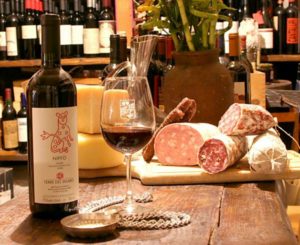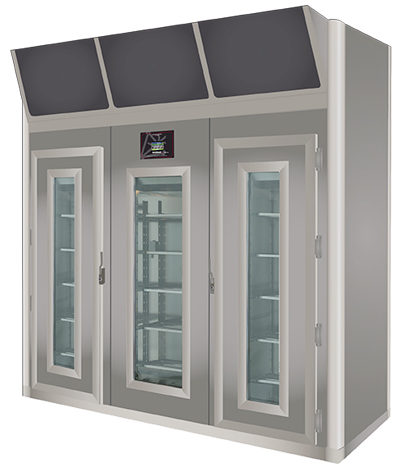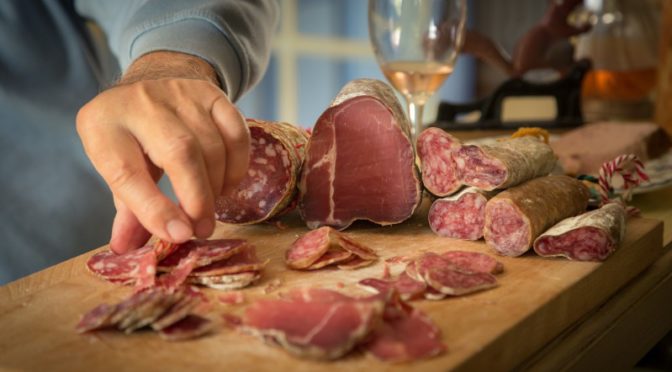
In today’s world, to survive in the food business, you can’t afford to sacrifice quality for quantity. If you run a kitchen in a restaurant, a hotel, or a meat market and serve sausage, salumi, or salami, you’re going to want a reliable way of sourcing your meats to develop and maintain your reputation and to keep your clientèle coming back. While many turn to outsourcing and buying pre-packaged meats, there’s no question that curing your salami yourself through traditional processing is the best way to guarantee the quality of whatever you serve. The problem is that unless you live in a Mediterranean climate like Italy or Southern California, curing your meats in-house can seem impossible without unreasonably expensive technology. Today we’ll review the necessary steps for curing meat, why it’s worth investing in a cabinet that can perform these steps automatically, safely, and consistently, and how to choose the right cabinet for your business needs.
What is meat curing and which environmental conditions are necessary?

Curing meat is simply a way of preserving meat in a shelf-stable state (i.e., in a way that doesn’t require refrigeration once complete). It’s one of the oldest food preservation practices in the world, and has been used to keep meat safe to eat for thousands of years, particularly before the incredibly recent–relatively speaking–advent of refrigeration. When done correctly, it involves slowly releasing water from meat at a controlled rate. In other words, you’re drying meat under certain conditions; once you’ve removed enough water from the meat (known as the water activity level), you can eat the meat and store it for extended periods of time safely, as living organisms like bacteria and fungi (which spoil meat and make us sick) can’t survive or thrive without moisture.
To cure meat, you either need to find an environment where the necessary ambient conditions are already present or you need to build such an environment yourself. Certain parts of the world–Italy and southern California, for example–have the Mediterranean climates necessary to cure meat without significant mechanical intervention. The rest of us will need some technology on our side.
Which temperatures do you need to cure sausages?

To cure meat, you want temperatures to sit ideally between 50°F and 60°F, or 10°C and 15.5°C. Above 60 degrees Fahrenheit, bacteria will grow too quickly to safely manage consistently, dramatically increasing your odds of spoiled or otherwise unsafe meat. Below 50°F, you don’t need to worry more about bacteria, but the curing process becomes increasingly slower, forcing you to spend much more time preparing your meat instead of selling or eating it. The slowed curing process also means your charcuterie will also need much more time to dehydrate, or reach a level of water content safe for consumption and avoiding spoilage. In most climates, the issue won’t be reaching 50°F but in staying below 60°F.
What are safe humidity levels for curing salumi and salami?

Humidity is the second huge factor in meat curing; the ideal range is above 70% but under 75%. If humidity drops below 70%, the outsides of your meat can dry too quickly, trapping moisture inside the meats and spoiling them. On the other end, your charcuterie can develop toxic mold and bacteria if humidity levels stay above 75% for extended periods of time, as it won’t be able to dry properly.
Typically, when dry curing, you’ll want to start at around 85% humidity before dropping to 75% over the following week; the goal here is to keep humidity levels slightly below the meat’s water content in order to regulate the rate at which the meat dries.
How much air flow does meat need to successfully cure?

Finally, while air flow isn’t nearly as important as temperature and humidity control, it’s still an essential part of safe and effective salami production. Air flow both helps dry your meats (by removing moisture from their surfaces) and keep bad molds from growing on the surface due to disruption of stagnant, moisture-rich air around the meat. Typically a small fan set up to keep air moving in your curing space will be enough to resolve this issue.
Are there meat curing cabinets that automate at least some of these steps?

Yes! If the process of meat curing sounds like an impossible juggling act, you understand why restaurants, hotels, and markets are willing to pay top dollar for reliable machines that automate salami and sausage production.
While there are a number of options on the market, Stagionello is the brand we recommend because they have the longest track record of automating meat curing cabinets, and are likely to continue to dominate the process in the future. Their machines are among the most advanced out there when it comes to food preservation and traditional salami preparation, and that expertise is worth paying for. Cabinets like the STG200600 or STG100300 can cure up to 2,000 pounds of meat per month without requiring any action from the end-user aside from making sure the machines remain connected to power and water supplies. When you consider how much money you can make from high quality, in-house salami production, the machines are bargains for the capacities they allow.
![]() You can buy the Stagionello STG200600 800 kg meat curing cabinet here on Amazon. If the price is too dear or if you only need half as much curing capacity, you can buy the Stagionello STG100300 400 kg cabinet here instead.
You can buy the Stagionello STG200600 800 kg meat curing cabinet here on Amazon. If the price is too dear or if you only need half as much curing capacity, you can buy the Stagionello STG100300 400 kg cabinet here instead.
![]() Canadians, unfortunately Stagionellos are not readily available. We would advise you to have them shipped to a US address and drive them across the border, following all applicable laws and customs regulations as needed.
Canadians, unfortunately Stagionellos are not readily available. We would advise you to have them shipped to a US address and drive them across the border, following all applicable laws and customs regulations as needed.
 If you find our research on PMC helpful, you can follow our efforts to keep maniacally reviewing home appliances by shopping through our links above. We promise to keep fighting the good fight against every horror children, animals, and grown, yet messy humans can inflict upon a clean home.
If you find our research on PMC helpful, you can follow our efforts to keep maniacally reviewing home appliances by shopping through our links above. We promise to keep fighting the good fight against every horror children, animals, and grown, yet messy humans can inflict upon a clean home.

